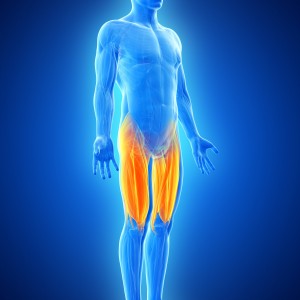Lower Limb Strength Impacts Systemic Sclerosis Patient’s Quality of Life and Functional Capacity, According to Study

 Researchers at Centro Universitário Augusto Motta and Hospital Federal de Bonsucesso in Rio de Janeiro, Brazil recently discovered that muscle strength in the lower limbs of patients with systemic sclerosis influences the patient’s functional capacity and quality of life. The study is entitled “Lower limb muscle strength is associated with functional performance and quality of life in patients with systemic sclerosis” and was published in the Brazilian Journal of Physical Therapy.
Researchers at Centro Universitário Augusto Motta and Hospital Federal de Bonsucesso in Rio de Janeiro, Brazil recently discovered that muscle strength in the lower limbs of patients with systemic sclerosis influences the patient’s functional capacity and quality of life. The study is entitled “Lower limb muscle strength is associated with functional performance and quality of life in patients with systemic sclerosis” and was published in the Brazilian Journal of Physical Therapy.
Systemic sclerosis, also known as scleroderma, is a rare, chronic autoimmune disease in which the body’s own immune system attacks healthy tissues, resulting in a hardening and tightening (fibrosis) of the skin and connective tissues. Scleroderma usually affects the skin, but it can also affect internal organs such as the lungs, blood vessels, heart, kidneys and the digestive tract. Systemic sclerosis is more common among females in comparison to males.
More than 80% of the patients with systemic sclerosis complain about peripheral muscle weakness, which may decrease the exercise performance and ability of the patients to perform daily tasks, leading to decreased functional capacity and interfering with quality of life. The 6-min walk test (6MWT) is a simple, noninvasive and highly reproducible test that can evaluate the exercise capacity of the individual and the effort required to perform daily tasks. However, this test does not provide information about the factors responsible for an eventual functional impairment.
[adrotate group=”3″]
In this study, individuals with systemic sclerosis were evaluated for the peripheral and respiratory muscle strength and endurance, and for its possible correlation with the 6MWT test results and quality of life. The functional capacity, pulmonary function, nutritional status, and quality of life of patients with systemic sclerosis were also evaluated.
Researchers conducted a cross-sectional study comprising 20 systemic sclerosis patients and 20 healthy controls. All participants underwent several tests, namely the 6MWT, pulmonary function testing, isometric dynamometry (to measure the strength exerted against an immovable object), surface electromyography (to measure the electrical activity of muscles) and bioelectrical impedance analysis (to estimate body composition, especially body fat). Participants with systemic sclerosis also responded to health questionnaires.
Researchers found that patients with systemic sclerosis had reduced quadriceps strength, increased quadriceps fatigability, defective pulmonary function, and a reduced 6MWT in comparison with healthy controls. It was also found that the 6MWT results were significantly correlated with the individual’s quadriceps strength.
The research team concluded that patients with systemic sclerosis have reduced respiratory muscle and quadriceps strength and that these muscles are more susceptible to fatigue. A correlation was found between the patient’s functional capacity, quadriceps strength, and quality of life. The research team believes that individuals with systemic sclerosis should be encouraged to improve their physical performance, and that their findings may help future interventional studies focused on rehabilitation strategies for these patients.






